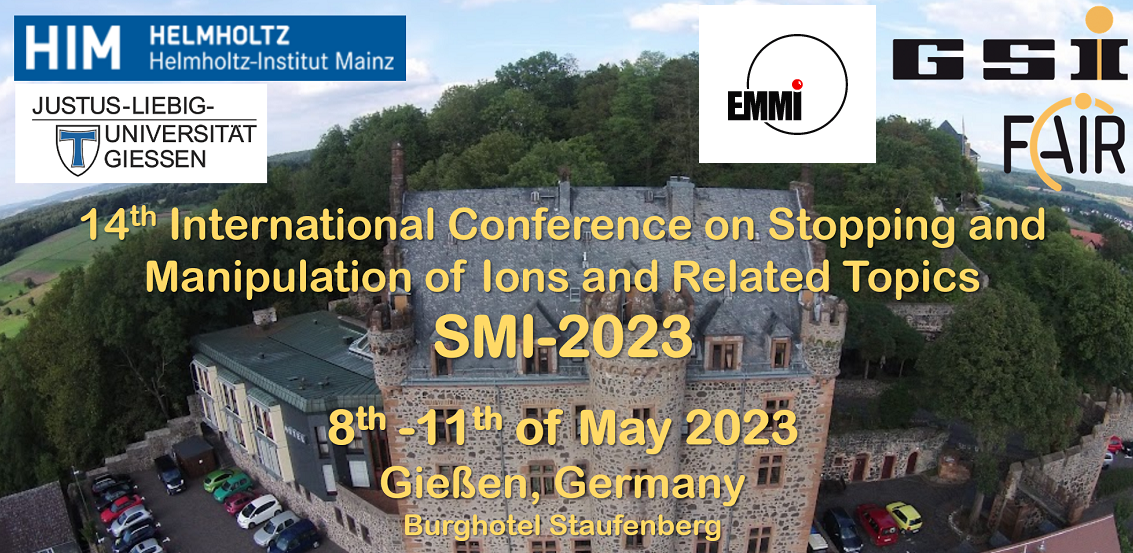Sprecher
Beschreibung
A. State1, D.L. Balabanski1, P. Constantin1, M. Cuciuc1, A.
The High Areal Orthogonal Extraction Cryogenic Stopping Cell (HADO-CSC) represents a state of
the art ion catcher design, used for the formation of radioactive ion beams (RIBs). It has a two-chamber
design, leading to a faster estimated extraction when compared to existing ion catchers[1]. It uses Helium
at cryogenic temperatures to freeze out the impurities and strong DC fields are used to further decrease the
travel time through the stopping gas. Close to the top wall, an ion transport device (RF Carpet) will catch
the incoming ions and drift them towards the center. There, a sub-mm nozzle will form, due to the difference
in pressure of two orders of magnitude, a supersonic jet. These jets are used as a guiding mechanism to
drag the ions from one chamber to the next.
The HADO-CSC collaboration extends to several institutes and Universities around the world: GSI and
Giessen University (Germany), where it was firstly proposed, as an upgrade to the existing longitudinal
extraction cryogenic stopping cell[2], ELI-NP (Romania), Soreq (Israel), JYFL (Finland).
As a very challenging and complex scientific setup, which does not exist anywhere in the world, multiple
aspects can be treated separately and in detail, e.g. supersonic jet optimizations, testing different RF
Carpet designs etc. As such, at ELI-NP different test-units have been considered that describe and test
different aspects of the HADO-CSC. Two such examples are represented by the RF Carpet Test Unit and
the Supersonic Test Unit (STU). The latter, represents the main focus of the poster which covers different
aspects revolving around the formation and properties of the used supersonic jets.
The STU is a setup designed and constructed in-house, to characterize supersonic gas jets with different
invasive and non-invasive techniques. These methods combine the Schlieren imaging technique, gas jet
fluorescence, Pitot tube measurements. The results are then applicable to the HADO-CSC in terms of
optimizing the ion transport and designing the gas system.
References
[1] T. Dickel et al. Conceptional design of a novel next-generation cryogenic stopping cell for the lowenergy
branch of the super-frs. Nuclear Instruments and Methods in Physics Research Section B: Beam
Interactions with Materials and Atoms, 376:216–220, 2016. Proceedings of the XVIIth International
Conference on Electromagnetic Isotope Separators and Related Topics (EMIS2015), Grand Rapids, MI,
U.S.A., 11-15 May 2015.
[2] S. Purushothaman et al. First experimental results of a cryogenic stopping cell with short-lived, heavy
uranium fragments produced at 1000 mev/u. Europhysics Letters, 104(4):42001, dec 2013.
Acknowledgement
This work was carried out under the contract PN 23.21.01.06 sponsored by the Romanian Ministry of
Research, Innovation and Digitalization.

